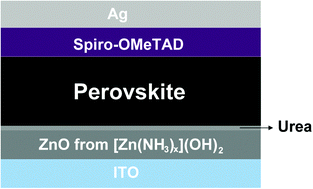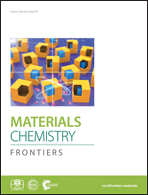Low-temperature aqueous solution processed ZnO as an electron transporting layer for efficient perovskite solar cells†
Abstract
Lead halide perovskite solar cells (PSCs) typically use high-temperature processed TiO2 as electron transporting layers (ETLs). Here, we report a low temperature and aqueous solution processed route to prepare ZnO ETLs for perovskite solar cells. The ZnO ETL was prepared by spin coating a stable aqueous solution of an ammine–hydroxo zinc complex, [Zn(NH3)x](OH)2, followed by thermal annealing at a relatively low temperature of 150 °C. The as-prepared ZnO film was highly transparent and uniform. Moreover, the relatively low work function of the ZnO film led to a high open circuit voltage (1.07 V), indicating its promise as the electron transporting layer. To further improve the photovoltaic performance, urea was introduced between the ZnO layer and the perovskite layer to improve the perovskite crystal growth. As a result, the PCE surged to 14.6%. We further exploited the low-temperature processed ZnO film for flexible PSCs, which have shown good mechanical stability with a respectable PCE of 11.9%.

- This article is part of the themed collection: Next-Generation Organic/Hybrid Photovoltaics

 Please wait while we load your content...
Please wait while we load your content...